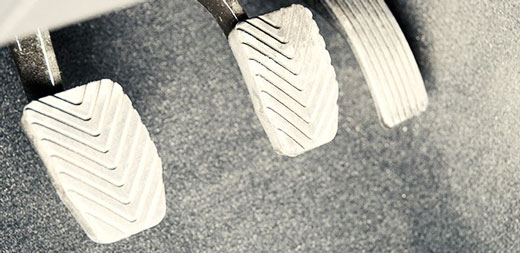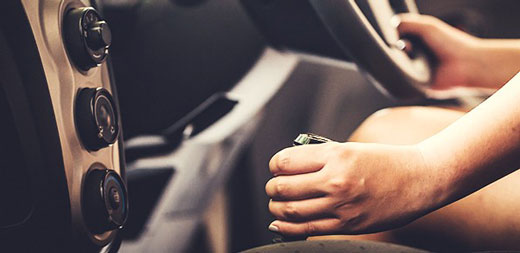Manual transmission basics
For many car enthusiasts, there is nothing like a manual transmission. Pushing down on the clutch and shifting through the gears is a rush that an automatic transmission just can’t provide. While your clutch is designed to be durable and long lasting, it is a part that can wear out.
For the uninitiated, a vehicle with a standard transmission typically features a pedal to the left of the brake, which is known as a clutch. The driver must engage the clutch to shift the vehicle through the gears.
The average lifespan of a clutch is anywhere between 20,000 to 150,000 miles. Luckily, your clutch will likely give you ample notice that something is going wrong. Don’t get left at the side of the road with a vehicle that won’t shift into gear. Read on to learn the signs and symptoms of a failing clutch.
Soft or spongy clutch pedal
One of the first signs you may notice is that your clutch feels soft or spongy when you press down on it. As you are driving, take note of how your clutch feels when you engage it. By knowing how it normally feels, you’ll be aware when there is an issue.


Trouble shifting
If you find that your vehicle is hard to shift and doesn’t engage smoothly, you might have a failing clutch. You are most likely to notice this when putting the car in reverse and first gear.


Slipping
This is exactly what it sounds like. When under stress, it may feel like the transmission slips out of gear for no reason. This is a classic symptom of a failing clutch that needs to be attended to.
Burning smell
A burning smell many times goes hand-in-hand with a failing clutch. The friction from the clutch slipping causes the unmistakable odor.
Noises
If the parts in your clutch aren’t working properly, it can cause a variety of noises. These noises can come from a loose component hitting other parts or it could be a result of parts sticking together and pulling apart.
Sticky or stuck pedal
A clutch that sticks can cause grinding noises or can keep your vehicle from going into gear while a clutch pedal that is stuck to the floor renders your vehicle undriveable. If either of these situations happens to you, a trip to your mechanic is in order.


Next steps
If you notice any of these symptoms in your vehicle, making an appointment with your trusted mechanic is your next step. Driving with a failed clutch can be dangerous, as when a clutch goes bad it can break apart, leaving you without a vehicle. Your mechanic will be able to make a proper diagnosis and recommended repair to get you back on the road.


Making your clutch last
Your driving habits play a big role in the lifespan of your clutch. The less stress you put on your clutch, the longer it will last. Follow these simple guidelines to get the most out of your clutch.
One of the first things you were likely told when learning to drive a stick shift was to avoid riding the clutch. That is still good advice. Don’t use the clutch to control your vehicle’s speed. Riding the clutch is hard on the part and can lead to premature failure.
If you are sitting at a traffic light or in line at the drive-thru lane and expect to wait more than 10 seconds, don’t use the clutch to keep your car in a stopped position. Take the car out of gear, engage the brake and put it in neutral until you’re ready to take off. This seemingly small action can help save wear and tear on your clutch.
Learn more about quality auto parts, find your car part, or find a local car repair shop today.
